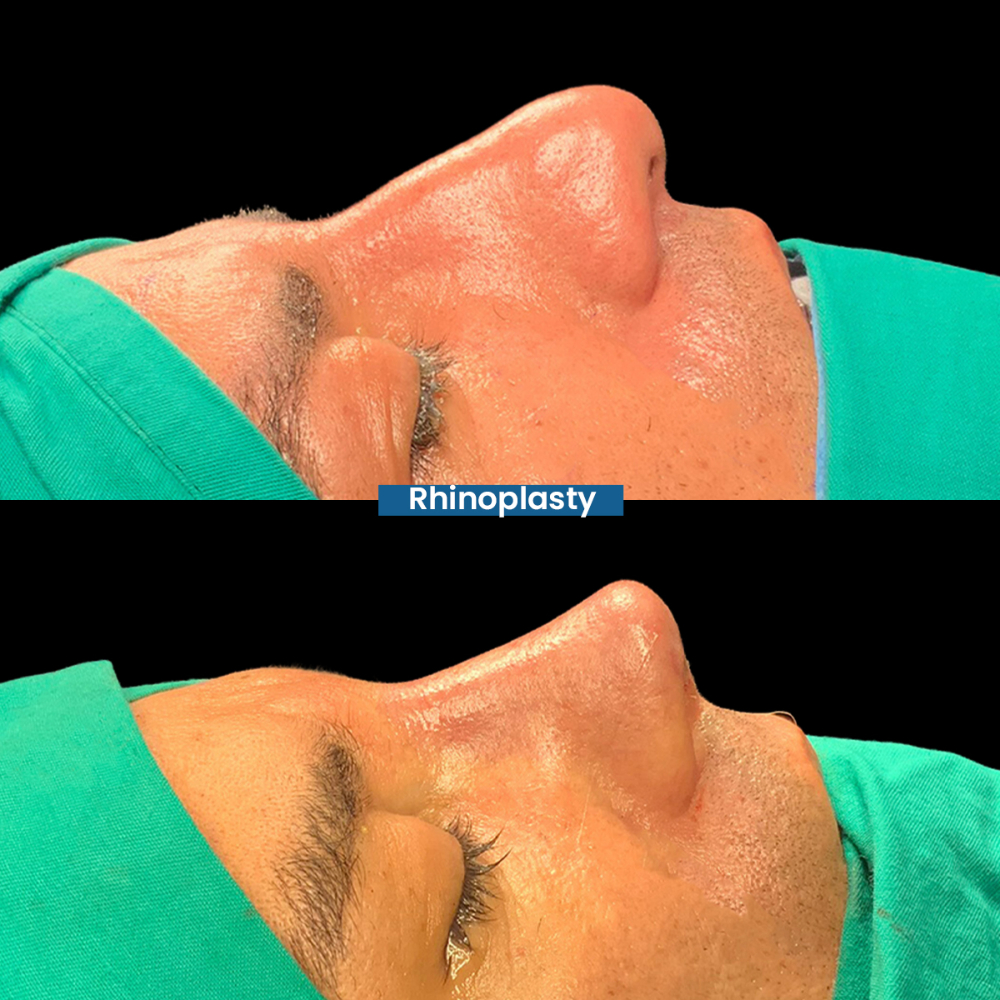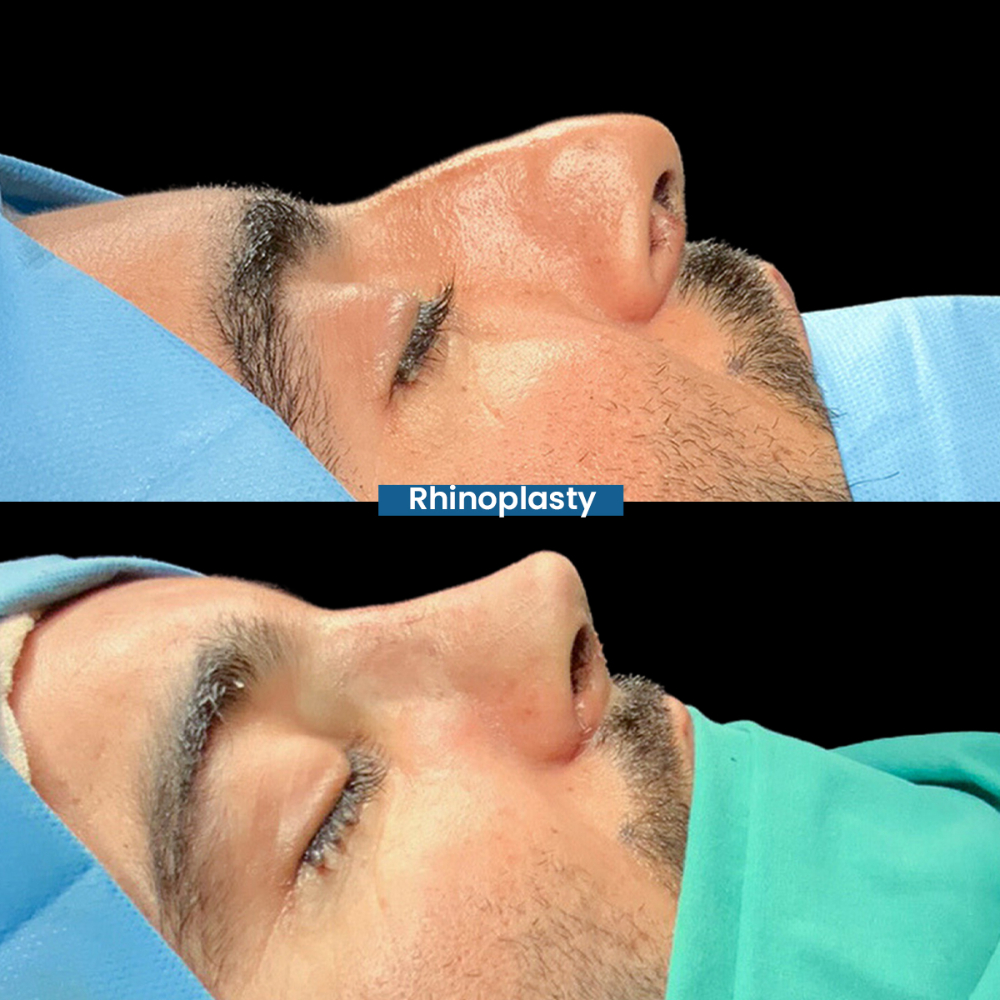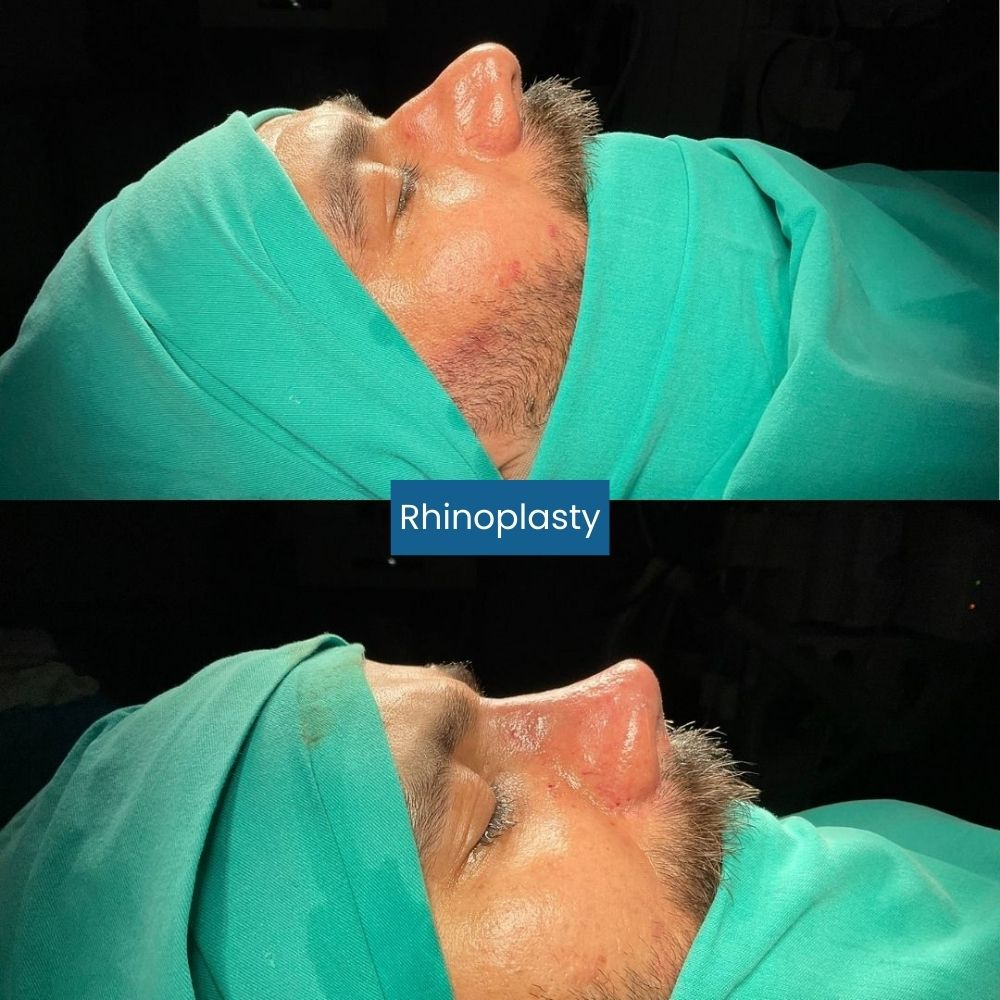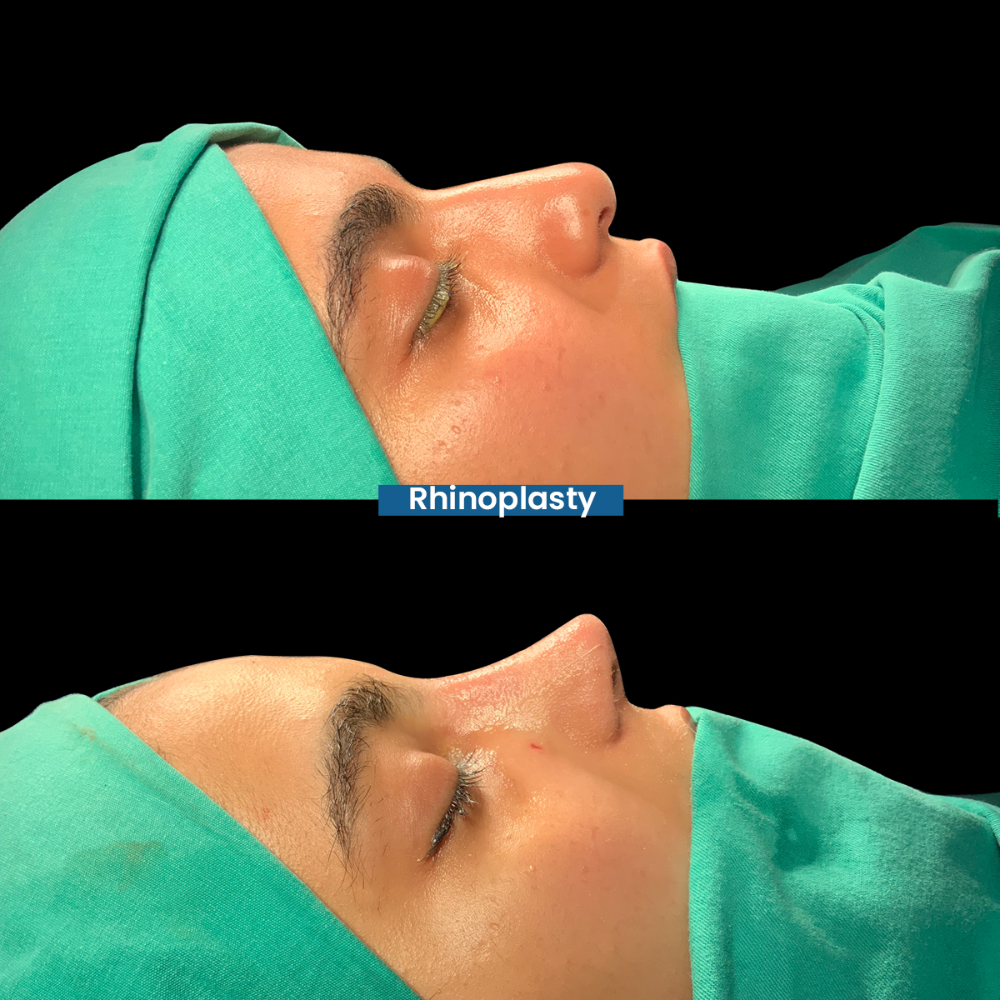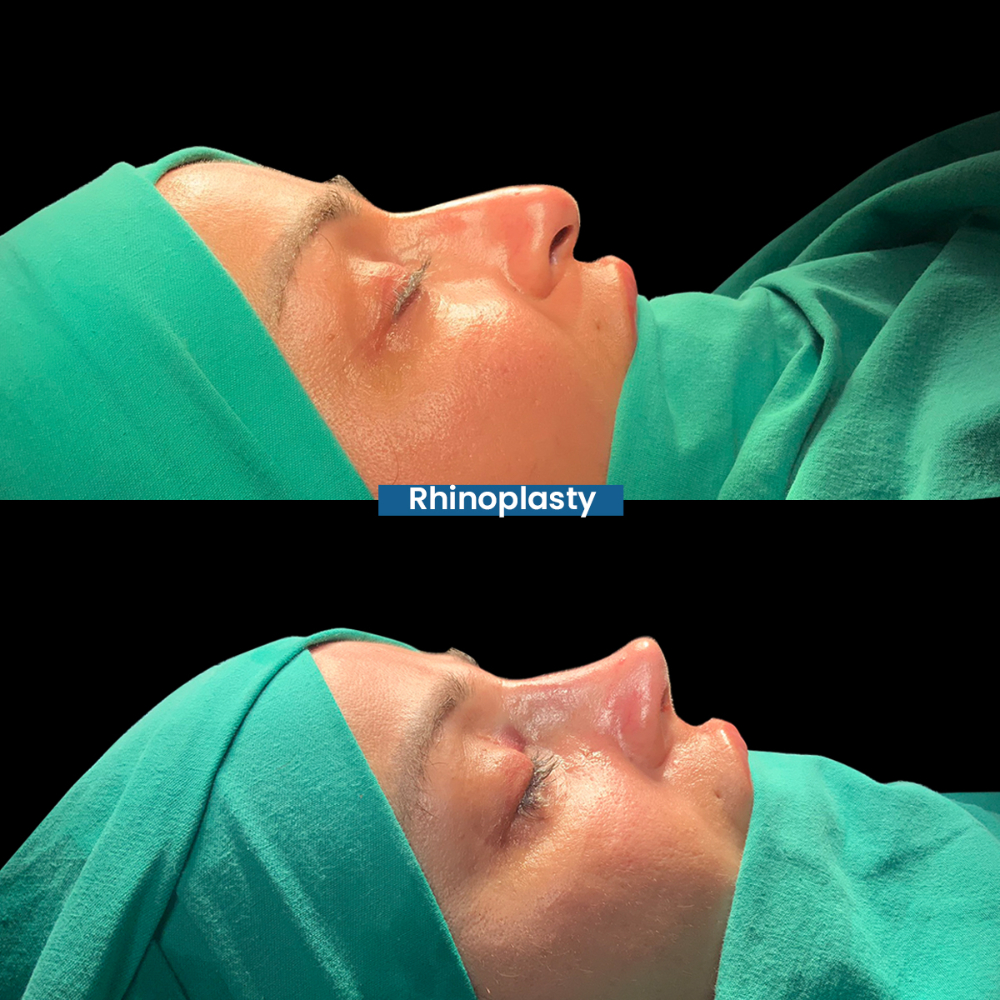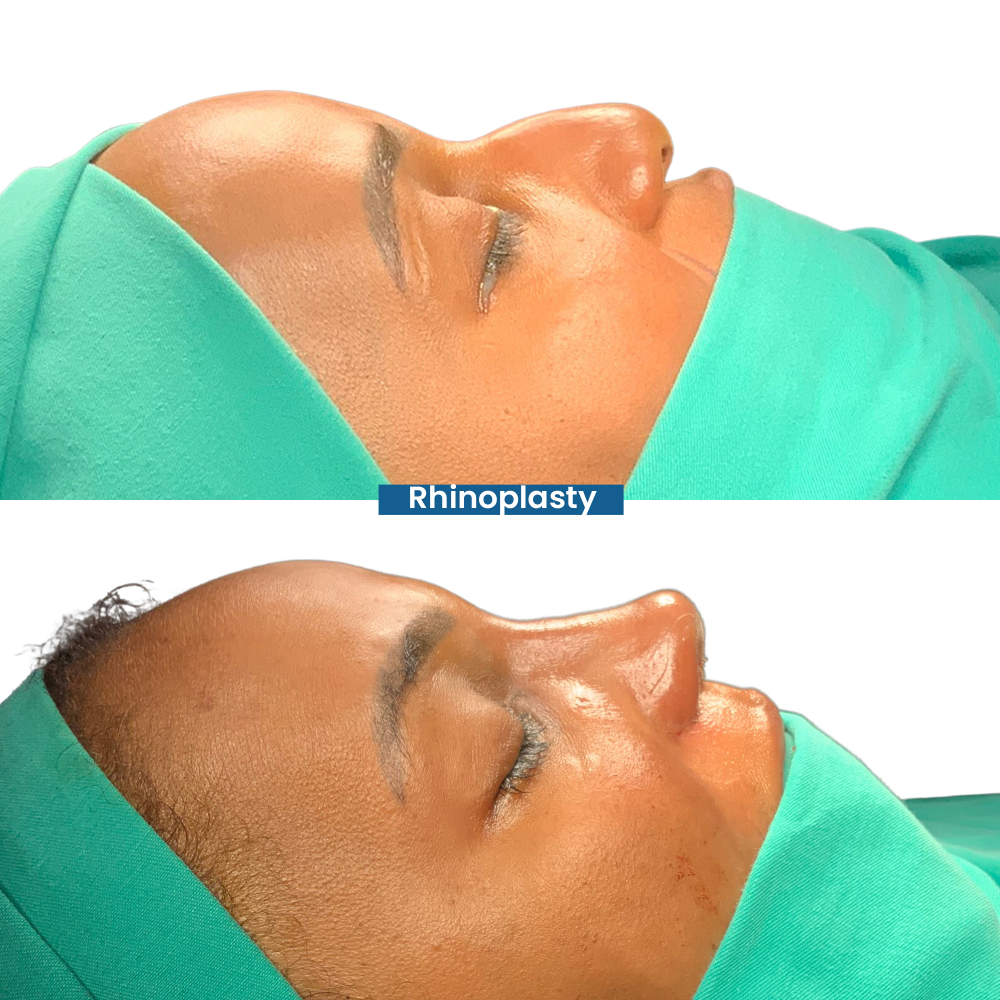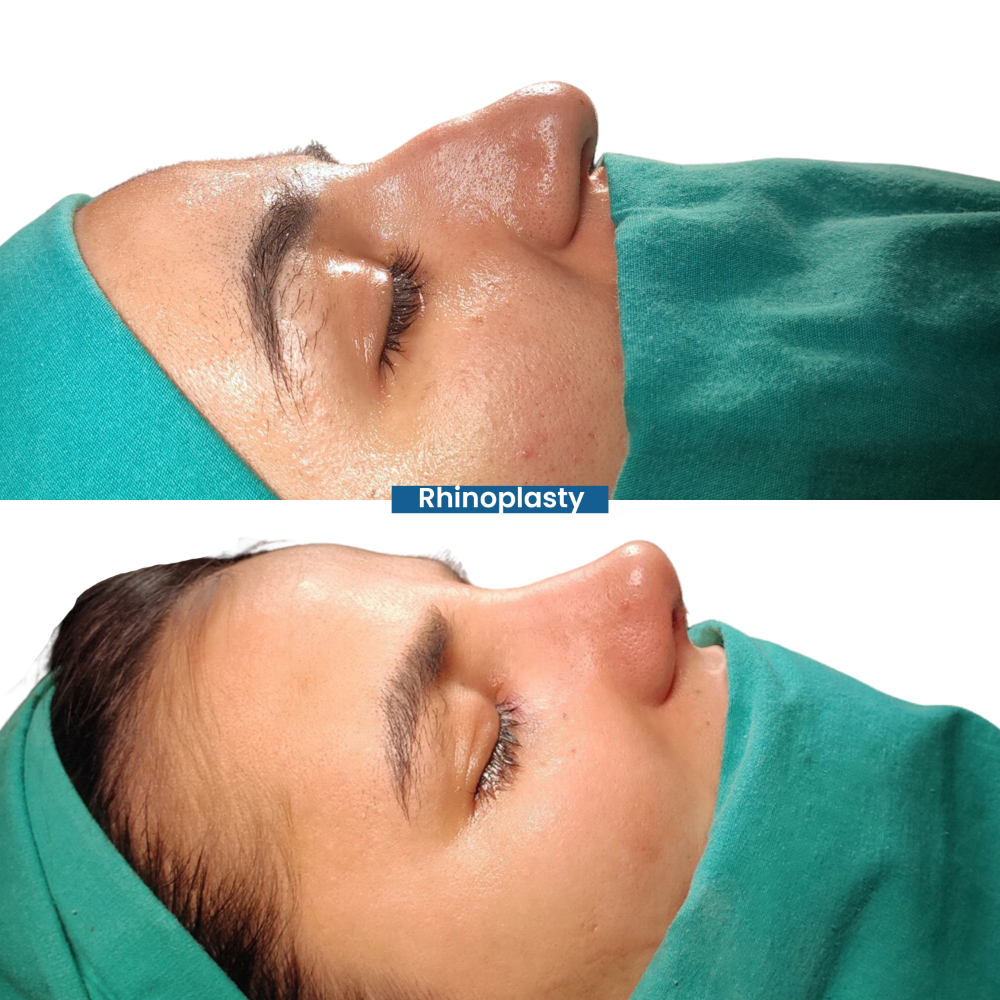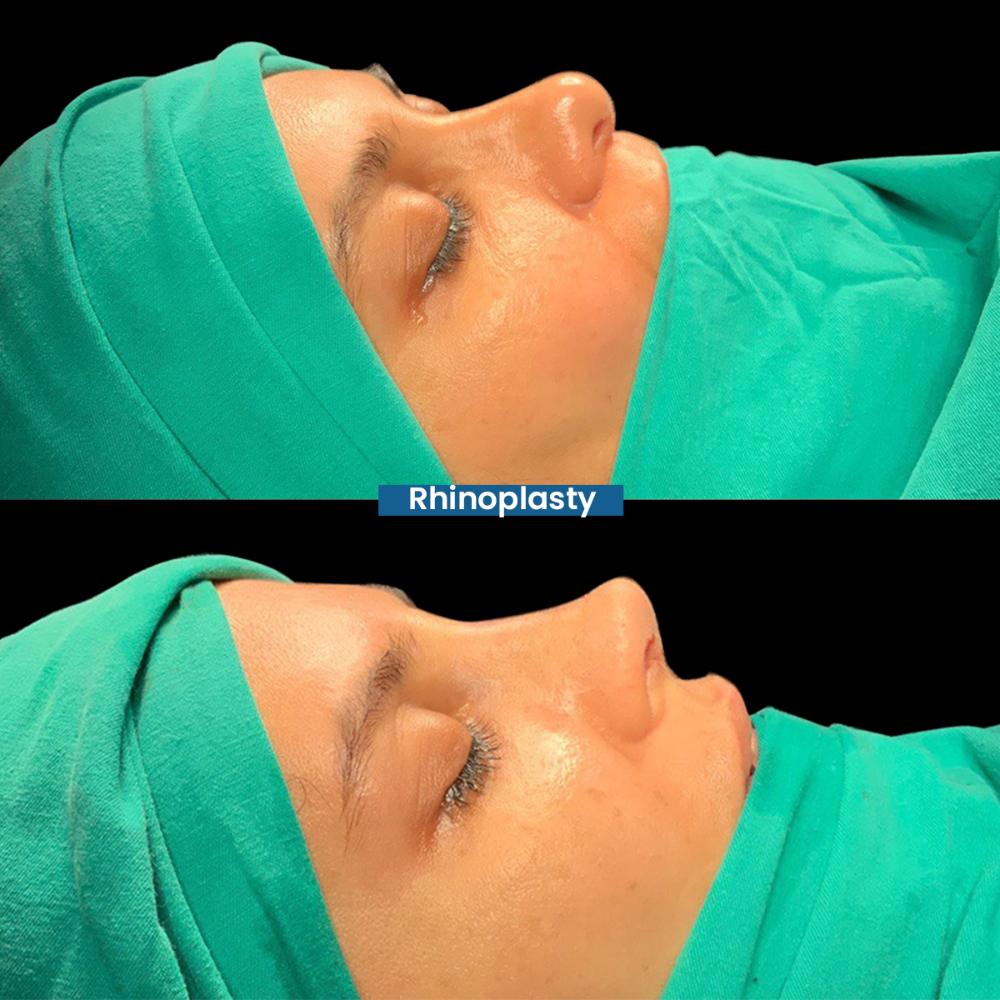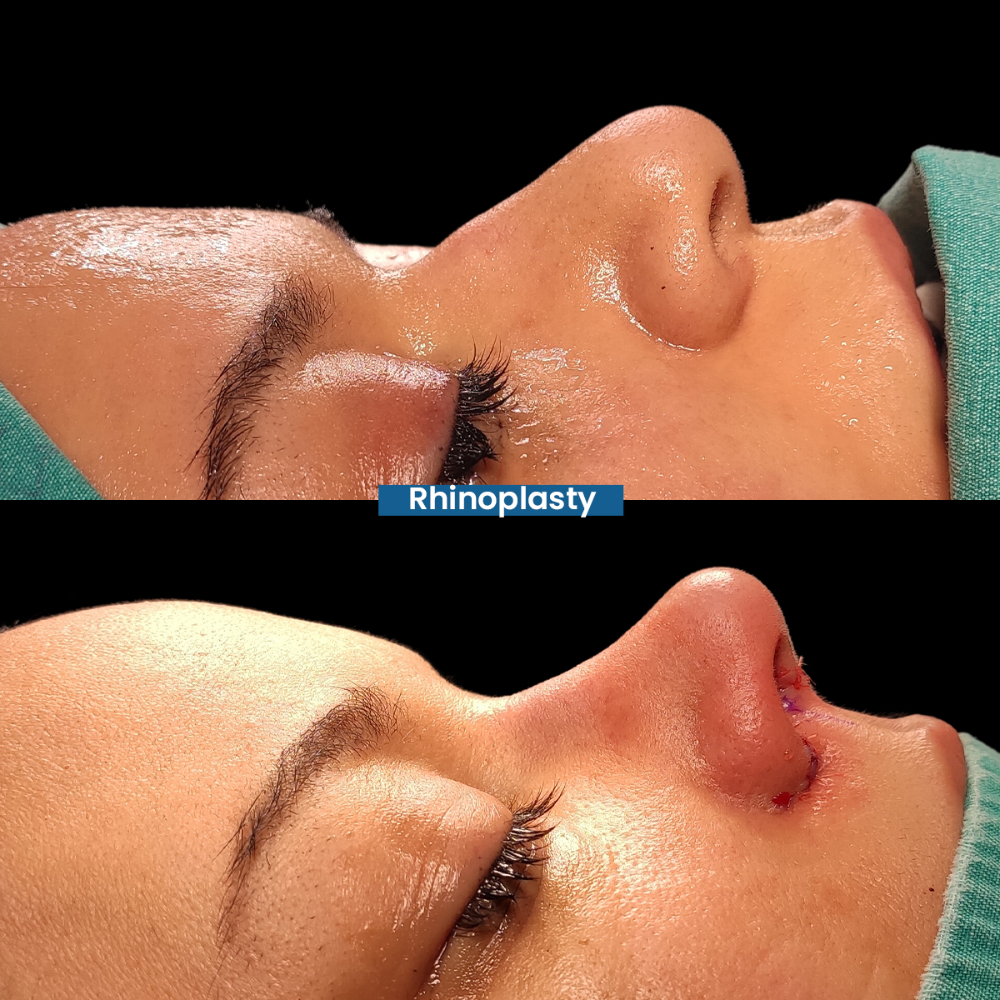How Much is a Nose Job in Turkey in Pounds
How Much is a Nose Job in Turkey in Pounds
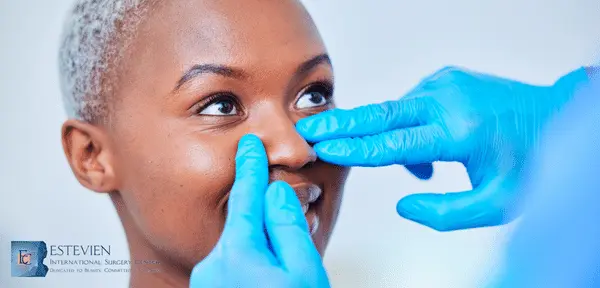
nose job turkey – all-inclusive
The average cost of Rhinoplasty (nose job) in Turkey ranges from 2155£ to 6102£.
| Operation | Turkey | United States of America | United Kingdom |
|---|---|---|---|
| Alarplasty | from £2586 | from £4056 | from £4350 |
| Closed rhinoplasty | from £3215 | from £4456 | from £4489 |
| Nasal hump removal | from £2155 | from £4258 | from £4125 |
| Non-Surgical nose correction | from £539 | from £2500 | from £2800 |
| Open rhinoplasty | from £5300 | from £9000 | from £8000 |
| Osteotomy rhinoplasty | from £6102 | from £8000 | from £8000 |
| Prosthetic nose | from £2255 | from £4235 | from £4356 |
| Revision rhinoplasty | from £3568 | from £9000 | from £8500 |
| Rhinoplasty (nose job) | from £2585 | from £4129 | from £3900 |
| Tip rhinoplasty | from £2155 | from £4500 | from £4500 |
What is rhinoplasty?
Rhinoplasty, also commonly known as a nose job, is a surgical procedure that reshapes the nose. It can be performed for both cosmetic and functional reasons.
Cosmetic rhinoplasty is done to improve the appearance of the nose. This can involve changes to the size, shape, or profile of the nose. Some common cosmetic concerns that rhinoplasty can address include:
- A nose that is too large or too small
- A wide or narrow bridge
- A hump or bump on the bridge
- A droopy or upturned tip
- Large or wide nostrils
Who might want to get rhinoplasty?
People consider rhinoplasty for two main reasons:
1. Looks: They want to improve the appearance of their nose, like fixing a hump, reshaping the tip, or making it smaller/larger. This can boost their confidence and self-esteem.
2. Function: They have breathing problems due to a deviated septum, narrow nostrils, or injuries. Rhinoplasty can open up airways and improve breathing.
Who is a candidate for rhinoplasty?
While I can’t definitively assess whether you’re a candidate for rhinoplasty, here are some general guidelines:
Good candidates:
- Over 18 (sometimes 17 for females) and done growing: Facial development should be complete.
- Healthy: No major medical conditions or active infections.
- Realistic expectations: Wanting subtle improvements, not drastic changes.
- Non-smoker: Smoking affects healing and results.
- Positive outlook: Ready for the surgery and potential recovery challenges.
Consider consulting a surgeon if:
- You have concerns about the appearance or function of your nose.
- You have realistic goals and understand the risks and recovery process.
- You meet the general criteria mentioned above.
What does rhinoplasty do?
Rhinoplasty, often referred to as a nose job, is a surgical procedure that reshapes the nose for both cosmetic and functional reasons.
Cosmetic rhinoplasty:
- Aims to improve the appearance of the nose by addressing concerns like:
- Size: Making the nose smaller or larger
- Shape: Refining the bridge, tip, or nostrils
- Profile: Correcting bumps, humps, or asymmetry
Functional rhinoplasty:
- Focuses on improving the function of the nose by correcting issues that affect breathing, such as:
- Deviated septum: A misaligned cartilage wall obstructing airflow
- Narrow nostrils: Making it difficult to breathe
- Turbinate hypertrophy: Enlarged tissues blocking nasal passages
Essentially, rhinoplasty can:
- Enhance facial harmony and proportions
- Address breathing difficulties
- Improve self-confidence and self-esteem
- Correct birth defects or injuries
What’s the difference between rhinoplasty and septoplasty?
While both rhinoplasty and septoplasty are surgical procedures performed on the nose, they have distinct purposes and address different concerns:
| Feature | Rhinoplasty | Septoplasty |
|---|---|---|
| Focus | Appearance of the nose | Function of the nose |
| Main concerns | Size, shape, profile, asymmetry | Deviated septum, narrow airways, breathing difficulties |
| Outcome | Improved aesthetics, facial harmony | Improved breathing, reduced sleep apnea, sinus issues |
| Incisions | Open or closed rhinoplasty techniques | Usually internal incisions within the nose |
| Risks and recovery | Similar to other facial surgery, potential for swelling, bruising, and scarring | Shorter recovery time compared to rhinoplasty, less noticeable risks |
| Combined procedure | Sometimes performed together as "septorhinoplasty" for both aesthetic and functional concerns |
What are the different surgical approaches to rhinoplasty?
There are two main surgical approaches to rhinoplasty, each with its own advantages and disadvantages:
- Closed: Incisions inside nostrils, less visible scars, suited for simple changes.
- Open: Incision across columella, better access for complex cases, visible scar.
Rhinoplasty Techniques
- Closed Rhinoplasty
- Non-Surgical Rhinoplasty
- Revision Rhinoplasty
- Ethnic Rhinoplasty
- Ultrasonic (Piezo) Rhinoplasty
- Turbinate Reduction Surgery
| Approach | Incision | Advantages | Disadvantages | Best suited for |
|---|---|---|---|---|
| Closed Rhinoplasty | Inside nostrils | Less noticeable scarring, potentially quicker healing | Limited access, may not be suitable for complex cases | Simple changes, refining tip, minor hump reduction |
| Open Rhinoplasty | Across columella and base of nose | Better access for complex cases, more precise sculpting | Visible scar, potentially longer healing time | Complex cases, significant changes, major hump reduction, revision rhinoplasty |
| Non-Surgical Rhinoplasty | None (injection) | No incisions, immediate results, reversible | Temporary results, limited changes | Subtle corrections, adding volume to specific areas |
| Revision Rhinoplasty | Varies depending on correction needed | Improves previous rhinoplasty outcome or addresses functional issues | Can be more complex than primary surgery | Correcting previous rhinoplasty results, functional problems |
| Ethnic Rhinoplasty | Varies depending on desired outcome | Preserves ethnic features while achieving cosmetic goals | Requires skilled surgeon with understanding of specific ethnic characteristics | Patients seeking cosmetic changes while respecting their heritage |
| Ultrasonic (Piezo) Rhinoplasty | Similar to open or closed | Reduced tissue damage, potentially faster healing, precise sculpting | Less common technique, may not be available everywhere | Similar cases as open/closed rhinoplasty, potentially with faster recovery |
| Turbinate Reduction Surgery | Inside nostrils | Improves breathing difficulties | May cause dryness, temporary bleeding | Patients with nasal obstruction due to enlarged turbinates |
What happens before a rhinoplasty procedure?
Before a rhinoplasty procedure, there are crucial steps to undergo, ensuring both optimal results and patient safety. Here’s a breakdown:
- Initial Meeting: This involves discussing your desired outcome, medical history, and any concerns with a board-certified plastic surgeon.
- Physical Examination: The surgeon assesses your facial structure, nasal anatomy, and skin quality.
- Photos: Photographs are taken for reference and surgical planning.
- Medical Clearance: You may need blood tests and evaluations to ensure fitness for surgery.
- Medications: Discuss all medications and supplements you take, as some may need to be stopped beforehand.
- Smoking Cessation: Smoking hinders healing and increases risks. Quitting 6-8 weeks prior is recommended.
- Dietary Restrictions: Depending on anesthesia type, you may need to avoid food and drink after midnight the day before surgery.
- Advance Directives: Discussing preferred outcomes and decision-making in case of complications may be necessary.
What happens after a rhinoplasty procedure?
Following your rhinoplasty procedure, expect a period of recovery with specific steps to ensure optimal healing and desired results. Here’s what you might encounter:
Immediately After Surgery:
- You’ll wake up in a recovery room under observation for several hours.
- Your nose will likely be packed with gauze or splints to control bleeding and maintain shape.
- You’ll experience swelling, bruising, and possibly discomfort around your nose and eyes.
- Pain medication will be provided to manage discomfort.
First Few Days:
- The packing and splints will be removed, usually within 1-2 days.
- You’ll likely have a nasal drip pad to collect discharge.
- Continue pain medication as needed and apply cold compresses to reduce swelling.
- Rest and elevate your head to promote drainage and minimize swelling.
- Avoid strenuous activity, blowing your nose, and wearing glasses.
First Few Weeks:
- Swelling and bruising will gradually subside, but complete resolution may take several months.
- Start gentle nasal saline irrigation to keep the nasal passages clean.
- Attend follow-up appointments with your surgeon for monitoring and wound care.
- Resume light activities, but avoid strenuous exercise or contact sports.
Longer Term:
- Final results may take up to a year to fully develop as swelling continues to resolve.
- Maintain healthy habits like avoiding smoking and sun exposure to promote healing.
- Schedule regular checkups with your surgeon to ensure proper healing and address any concerns.
What are the stages of swelling after rhinoplasty?
Swelling after rhinoplasty is a natural part of the healing process and can be quite noticeable, especially in the first few weeks. It typically subsides gradually over several months, with distinct stages you can expect:
- Stage 1: Acute Swelling (Days 1-7):
- Stage 2: Subacute Swelling (Weeks 2-4):
- Stage 3: Remodeling and Refinement (Weeks 4-12):
- Stage 4: Maturation and Finalization (Months 3-12+):
- This is the peak of swelling, and your nose may feel puffy, tight, and tender.
- Bruising around your eyes and cheeks is common.
- Difficulty breathing due to nasal packing is expected.
- This stage is mainly about managing discomfort with pain medication, cold compresses, and head elevation.
- Swelling starts to decrease, but your nose may still feel swollen and look different.
- Bruising fades, and you might notice some asymmetry due to uneven swelling.
- Nasal packing is removed, allowing easier breathing.
- Light activity can resume, but avoid blowing your nose or strenuous exercise.
- Swelling continues to subside, and your nose starts to take on its final shape.
- Subtle changes in size and definition become more apparent.
- Most daily activities can be resumed, but avoid contact sports or activities that could bump your nose.
- Swelling is minimal, and your new nose shape is mostly visible.
- Fine-tuning and residual swelling may continue for up to a year in some cases.
- Full appreciation of the final results requires patience as internal healing progresses.
What is asymmetrical healing after rhinoplasty?
It’s common: Don’t panic, uneven swelling or shape after rhinoplasty happens often. It usually evens out as you heal.
Causes: Individual anatomy, surgery complexity, healing differences, & scarring can contribute.
Is it a problem? Mild cases usually fix themselves with time. If it’s noticeable, persistent, or affects breathing, see your surgeon.
What to do: Be patient, follow post-op instructions, and talk to your surgeon if concerned.
Remember: Perfect symmetry is rare, slight asymmetry might remain. Talk to your doctor for personalized advice.
What are the advantages of rhinoplasty?
Functional Benefits:
- Improve breathing: Corrects structural issues like deviated septum or enlarged turbinates, leading to easier breathing and reduced sleep apnea risk.
- Reduce congestion: Alleviate chronic sinusitis symptoms like headaches, facial pressure, and difficulty breathing.
- Address allergies: Improve airflow and reduce allergy symptoms.
Cosmetic Benefits:
- Enhance facial harmony: Reshape nose size, shape, or profile for a more balanced and aesthetically pleasing appearance.
- Boost confidence: Address self-consciousness about perceived nasal imperfections, potentially leading to increased confidence and self-esteem.
- Refine specific features: Address concerns like a hump, wide bridge, drooping tip, or asymmetrical nostrils.
Additional Benefits:
- Long-lasting results: Once healed, the reshaped nose structure persists, offering lasting improvement.
- Variety of techniques: Open, closed, ultrasonic, and other approaches cater to individual needs and preferences.
- Improved sleep quality: Better breathing due to corrected structural issues can lead to deeper, more restful sleep.
What is the recovery time for rhinoplasty?
While you might be eager to see your final results, rhinoplasty healing takes time and patience. Here’s a breakdown:
Initial Recovery (1-2 weeks):
- Expect swelling, bruising, and discomfort.
- Rest, elevate your head, and use cold compresses.
- Avoid strenuous activity and blowing your nose.
Visible Improvement (2-6 weeks):
- Swelling gradually subsides, revealing more of your new nose shape.
- Resume most activities cautiously.
Continued Change (3-6 months):
- Subtle refinements and swelling reduction occur.
- Most people look “normal” by 3 months.
Final Results (1 year+):
- Internal healing completes, and your final shape emerges.
- Enjoy your long-lasting results!
How can I speed up healing after rhinoplasty?
- Rest & sleep: Let your body heal!
- Follow doctor’s orders: Crucial for smooth recovery.
- Chill it out: Cold compresses reduce swelling.
- Eat healthy: Fuel your healing with good food.
- Take it easy: No gym sessions just yet.
- Skip the nose blowing: Let saline sprays do the work.
- Ditch the smokes: Smoking slows healing, raises risks.
- Manage pain: Stay comfortable, but avoid neglecting rest.
- Gentle massage (later): Can help reduce final swelling.
- Be patient: Results take time, trust the process.
- Talk to your doctor: Address any concerns promptly.
When can I go back to my regular activities after rhinoplasty surgery?
First 2 weeks: Rest, chill, avoid heavy lifting. Think walks, not workouts.
Weeks 2-6: Light activities like work or school okay. Still no nose blowing or gym sessions.
Months 3-6: Most activities allowed, but ease back into exercise. Wait for contact sports.
Year 1+: Enjoy your new nose worry-free!
When will I see the results of rhinoplasty?
Seeing the final results of rhinoplasty takes time, as your nose undergoes significant swelling and gradual healing. Here’s a breakdown:
Initial Improvement:
- 3-4 weeks: Swelling starts to subside, revealing subtle changes in shape and size.
Visible Progress:
- 2-6 months: Most patients look “normal” as swelling continues to decrease.
Final Results:
- 1 year+: Internal healing completes, and your final, refined shape emerges.
When should I see my healthcare provider?
You should also see your doctor if you experience any of the following:
- Persistent swelling or bruising that is not improving
- Numbness or tingling in your nose or face
- Discharge from your nose that is bloody, green, or foul-smelling
- Changes in your vision
- Any other symptoms that concern you or that are not listed in your post-operative instructions
- Cheek Lift Cost Turkey – Mid Face Lift
- Liposuction Cost Turkey
- J Plasma Turkey Price
- Tummy Tuck Surgery in Turkey Cost 2024
- Thigh Lift Surgery Cost Turkey 2024
- Mommy Makeover Turkey Cost 2024
- Brachioplasty Cost Turkey 2024
- Breast Lift Cost Turkey 2024
- Blepharoplasty Turkey Cost 2024
- Breast Reduction Turkey All-inclusive
- Dimple Creation Surgery in Turkey Price 2024
- Lip Lift Surgery Turkey Cost 2024
- Cat Eye Surgery in Turkey Cost 2024 – Canthoplasty
Before / After


